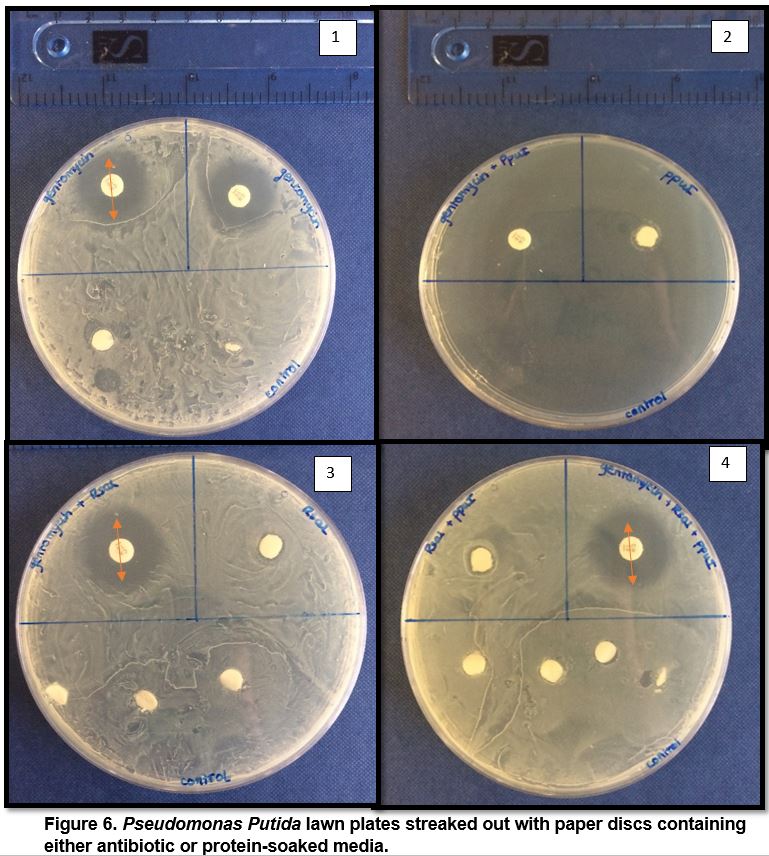
Proof of concept
To evaluate the implication of our transformed genes in biofilms, we cultured P.putida biofilms in the presence of our genes to see whether they would induce a positive or negative impact on biofilm formation.
To do so, 8 plates were made: one with AHL coded by PpuI, one with synthetic AHL diluted in DMSO, one with synthetic AHL diluted in water, one with AHL receptor-inhibitor coded by Rsal 2, one with AHL receptor-inhibitor coded by Rsal 4, one with periplasmic protease coded by LapG, and one with DMSO, and one with PSB1C3 as a negative control.
To extract the product of these genes, we inoculated universal bottles with colonies from each transformation and left them to incubate overnight in a shaking incubator at 37 C.
At the same time, P putida was inoculated in 5mL of LB broth and left to incubate overnight in the same shaking incubator at 37 C.
The following day, P.putida was diluted 1:100 in LB broth then 100 mL of this solution were pipetted in columns 3-12, and 200 mL were pipetted into column 2 . In all wells of column 1, 200 mL of LB broth were added. In total, 8 plates were set up.
The universal bottles inoculated with transformed E.coli were centrifuged at 1,500 rpm for 20 min. The supernatant, or LB broth, was conserved and the pellet, containing the bacterial cells, was discarded. 10 eppendorf tubes were set up, labelled 1-10. In tube 1, 1,000 mL of the supernatant was added. In tubes 2-10, 900 mL of LB broth were added. We then proceeded to perform a serial dilution, by pipetting 100 mL from tube 1 to tube 2, then 100 mL from tube 2 to tube 3, and so on up to tube 10.
This serial dilution was performed for the products of PpuI, Rsal 2, Rsal 4, LapG.
We also serial diluted synthetic AHL, first into DMSO and then into water. Once again, we set up 8 eppendorf tubes. Tubes 2-8 were loaded with 900 mL of DMSO. Tube 1 contained 1000 mL of a concentration of 10mM of AHL. We serial diluted from tube 1 to 8, transferring 100 mL from one tube to the next.
As for the water dilution, tube 1 remained the same as above (10 mM of AHL). Distilled water was pipetted into tubes 2 to 8, 900 mL into each. 100 mL were transferred from tube 1 to tube 2, and so on.
As a control, we serial diluted DMSO, with tube 1 containing 100% DMSO, and the remaining 9 tubes containing 900 mL of water and 100 mL from the previous tube.
To column 3 in each of the plates, we added 100 mL from Eppendorf tube 10 (a different one for each plate). Unless we were adding synthetic AHL, in which case we started with Eppendorf tube 8. We worked our way down the series of eppendorfs – the concentration was lowest in column 3 and highest in column 12 (or column 10 in the case of synthetic AHL).
The plates were left to incubate at 37 C overnight. The OD600 was read before staining the plates with 0.1% crystal violet. Once stained, the plates were read at 590 nm.










The effect of constructs on antibiotic susceptibility:



